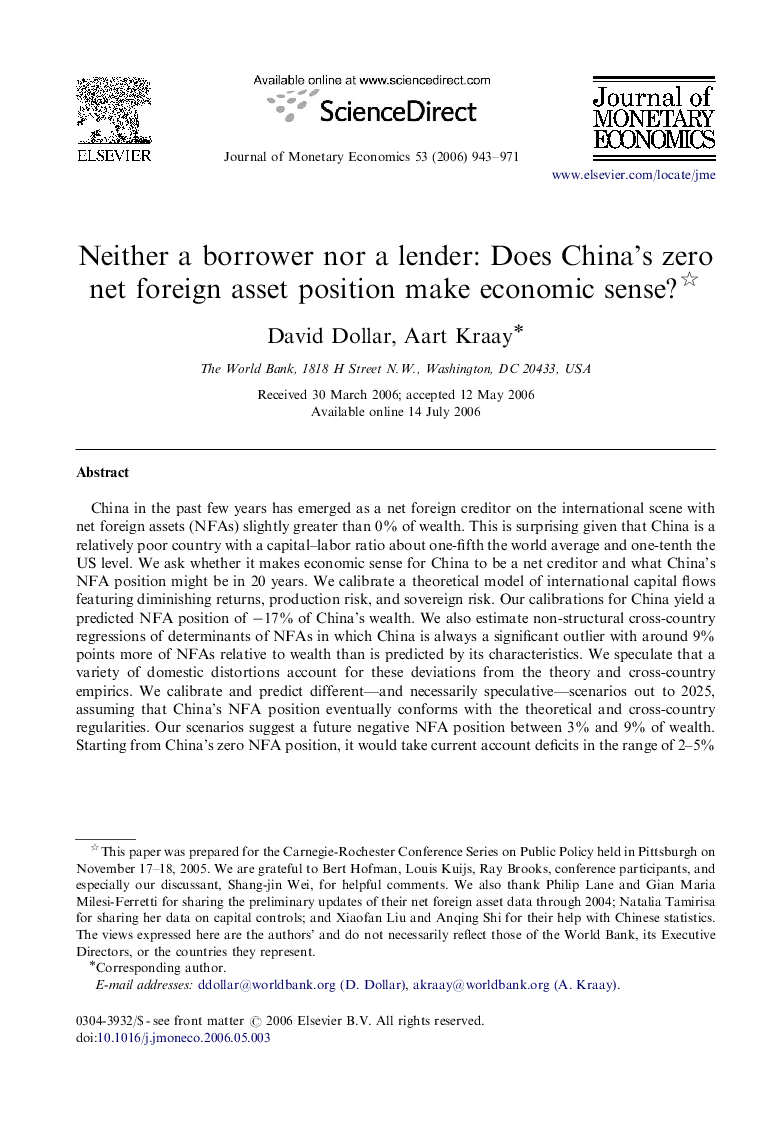| Article ID | Journal | Published Year | Pages | File Type |
|---|---|---|---|---|
| 967391 | Journal of Monetary Economics | 2006 | 29 Pages |
Abstract
China in the past few years has emerged as a net foreign creditor on the international scene with net foreign assets (NFAs) slightly greater than 0% of wealth. This is surprising given that China is a relatively poor country with a capital-labor ratio about one-fifth the world average and one-tenth the US level. We ask whether it makes economic sense for China to be a net creditor and what China's NFA position might be in 20 years. We calibrate a theoretical model of international capital flows featuring diminishing returns, production risk, and sovereign risk. Our calibrations for China yield a predicted NFA position of â17% of China's wealth. We also estimate non-structural cross-country regressions of determinants of NFAs in which China is always a significant outlier with around 9% points more of NFAs relative to wealth than is predicted by its characteristics. We speculate that a variety of domestic distortions account for these deviations from the theory and cross-country empirics. We calibrate and predict different-and necessarily speculative-scenarios out to 2025, assuming that China's NFA position eventually conforms with the theoretical and cross-country regularities. Our scenarios suggest a future negative NFA position between 3% and 9% of wealth. Starting from China's zero NFA position, it would take current account deficits in the range of 2-5% of GDP to reach any of these future NFA positions. These are not unreasonable deficits, but they would require a large adjustment from the present 6% of GDP current account surplus.
Related Topics
Social Sciences and Humanities
Economics, Econometrics and Finance
Economics and Econometrics
Authors
David Dollar, Aart Kraay,
